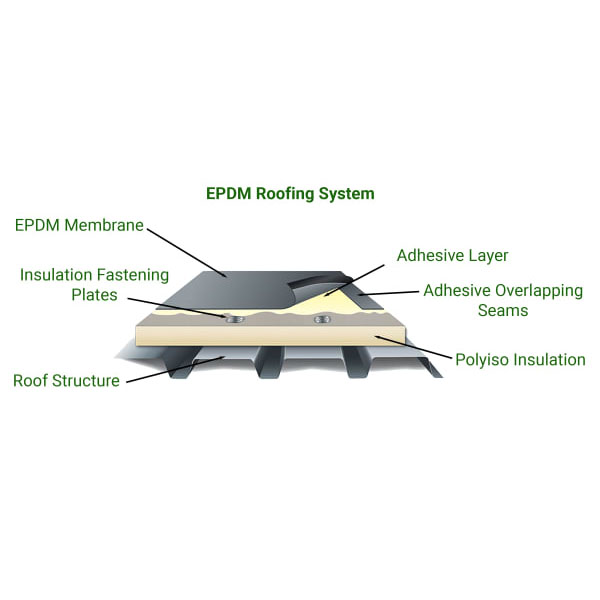Thermoset (EPDM) Roof Membrane: A Durable and Cost-Effective Roofing Solution

The roofing industry has continuously evolved to meet the diverse needs of commercial buildings, and Thermoset (EPDM) Roof Membrane stands out as a significant part of this evolution. Ethylene Propylene Diene Monomer (EPDM) roofing offers an excellent solution for commercial buildings in need of a durable, cost-effective, and environmentally friendly roofing option. With their ability to withstand various climatic conditions and adapt to different building designs, EPDM roofs are a versatile choice for a wide range of commercial applications. Brands like Weatherbond Roofing Systems enhance this choice by providing quality products that stand the test of time. For building owners and managers looking for a reliable, low-maintenance roofing solution, EPDM roofing systems are certainly worth considering.
Description and Key Features
EPDM is a synthetic rubber roofing membrane widely recognized for its outstanding durability, flexibility, and resistance to environmental factors. It is typically available in black or white and can be installed in either fully adhered, mechanically attached, or ballasted systems. EPDM membranes are particularly known for their long service life and low lifecycle costs.
Composition
EPDM roofing membranes are made primarily from ethylene and propylene, which are derived from oil and natural gas. The composition of EPDM allows it to resist degradation from UV rays, ozone, and extreme weather conditions. The membranes are usually available in a variety of thicknesses and widths, providing flexibility in installation and application.
Benefits
The primary benefits of EPDM roofing systems include their exceptional resistance to UV radiation, ozone, and harsh weather conditions. They are highly flexible, even in low temperatures, which reduces the risk of cracking and splitting. EPDM roofs are also known for their ease of installation and maintenance, as well as for being an environmentally friendly roofing option due to their long lifespan and recyclability.
Climate Considerations
EPDM roofing performs excellently in a variety of climates. Its ability to withstand high and low temperatures makes it suitable for both hot and cold environments. In warmer climates, the use of white EPDM helps in reflecting sunlight and reducing cooling costs. In colder regions, its resistance to freezing and thawing cycles makes it a reliable option.
Building Design and Purpose
EPDM roofing is versatile and can be used on a wide range of commercial buildings, especially those with low-slope or flat roofs. Its flexibility makes it ideal for roofs that expand and contract or experience regular movement. EPDM is also a good choice for buildings requiring a lightweight roofing solution.
Advantages and Disadvantages
The advantages of EPDM roofing include its longevity, with lifespans often exceeding 20 years, and its resistance to environmental factors. However, EPDM roofs can be prone to punctures and may require additional protection layers in areas where the roof will experience heavy foot traffic. Also, while installation is generally straightforward, it requires skilled professionals to ensure proper sealing and fitting.
Cost and Longevity
EPDM roofing systems offer a cost-effective solution for commercial roofing. The initial installation cost is competitive, and when considering the longevity and low maintenance requirements, EPDM roofs can be very economical over their lifespan.
Popular Brands: Weatherbond Roofing Systems
Weatherbond Roofing Systems is a prominent brand in the EPDM roofing market, renowned for its high-quality EPDM membranes. Weatherbond offers a range of EPDM roofing solutions that are known for their durability, ease of installation, and excellent weathering characteristics. Their products come with strong warranties, ensuring long-term performance and peace of mind for building owners.
Maintenance Requirements
Maintaining an EPDM roof is relatively straightforward. Regular inspections should be conducted to check for any signs of damage, such as cuts or punctures. Cleaning the roof surface to remove debris and checking the drainage system are also important to maintain the roof's integrity. Repairs, when needed, are usually simple and can be performed with compatible materials.
